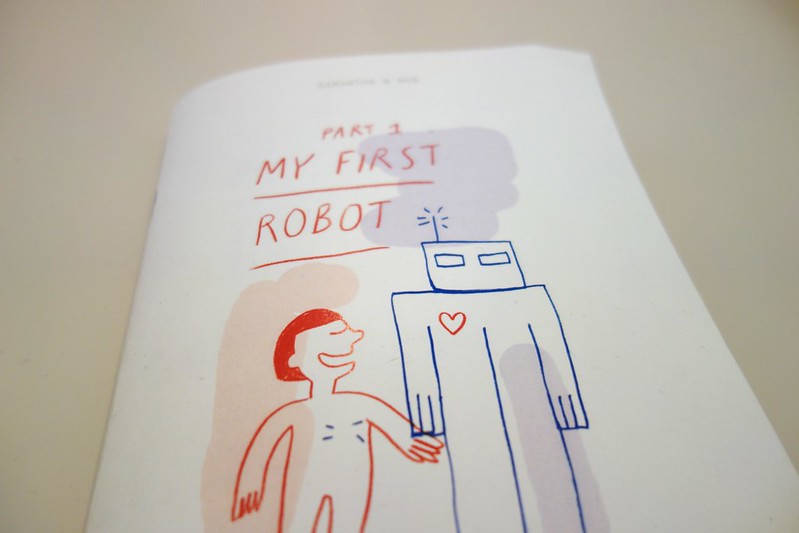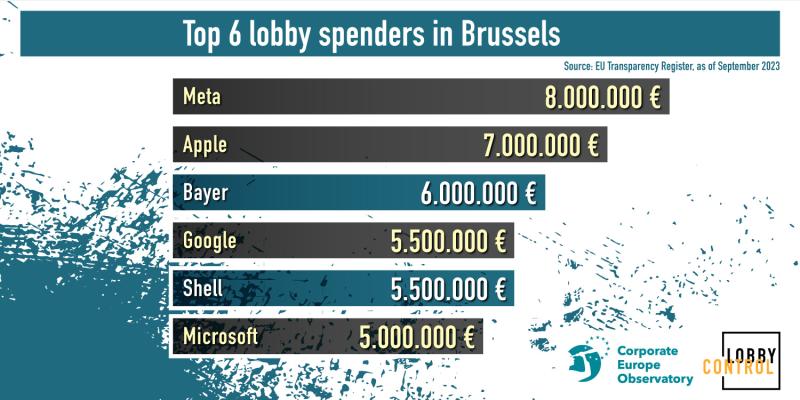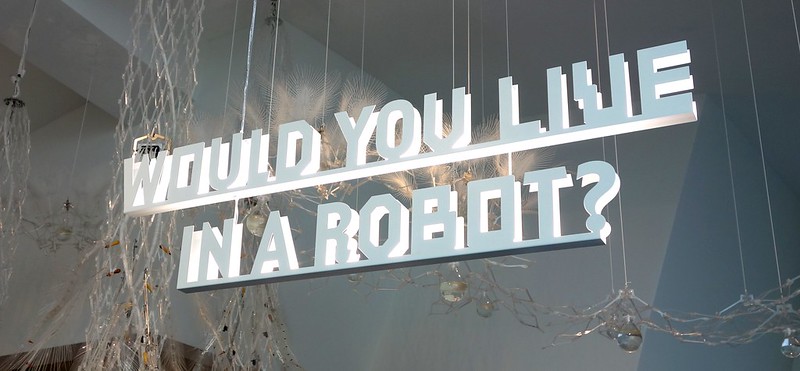
“Would you live in a robot?” One of the lead questions at Vitra’s Hello, Robot exhibition.
“Would you live in a robot?” is one of the questions posed at #hellorobot, an excellent current exhibition at Vitra Design Museum in Weil am Rhein, Germany. The overall theme of the exhibition is to explore design at the intersection of human & machine – here meaning robots, algorithms, AI and the like.

The entrance to Vitra Design Museum during the Hello, Robot exhibition, February 2017.
It’s rare that I travel just to attend an exhibition. In this case it was entirely worth it as #hellorobot addresses some themes that are relevant, salient, and urgent: How do we (want to) live in an age of increased automation? What does and should our relationship with machines look like? What do we think about ascribing personality and agency to machines, algorithms and artificial intelligence in their many forms?
These are all questions we need to think about, and quickly: They are merely early indicators of the kind of challenges and opportunities we face over the next decades, on all levels: as an individual, as businesses, as a society.

One of Douglas Coupland’s Micro Manifestos at Vitra.
The above-mentioned questions are, in other words, merely a lead-up to larger ones around things like agency (our own and the algorithms’) and governance, around the role of humans in the economy. A concrete example, if robots take care of the tasks we now pay people to perform (factory work, cleaning up the city, doing research, generating reports…) and if then (under the current model) only 20% of people would be in jobs, what does that mean, how do we earn a living and establish our role and status as a productive and valued member of society?
This example of robots doing most of the work doesn’t strike me as an abstract, academic one. It seems to be blatantly obvious that we need to rethink which roles we want humans to play in society.
This example of robots doing most of the work doesn’t strike me as an abstract, academic one. It seems to be blatantly obvious that we need to rethink which roles we want humans to play in society. All vectors aim at an economy which won’t require—nor be able—to employ 95% of the working-age population full-time. Yet, at the same time per-capita value creation rises and rises, so on a societal level—big picture!—we’re better off. So either we figure out how to handle high double-digit unemployment rates or we reframe how to think about less tasks requiring humans to do, how to unlock the potential of all the newly freed-up time in the day in the lives of millions upon millions of people, and what we want the role of people to be going forward.
(Ryan Avent’s book The Wealth of Humans seems like a good place to read up on possible scenarios. Thanks to Max & Simon’s recommendation in their newsletter The Adventure Equation. I haven’t read it yet but it’s the top of my to-read pile.)
///
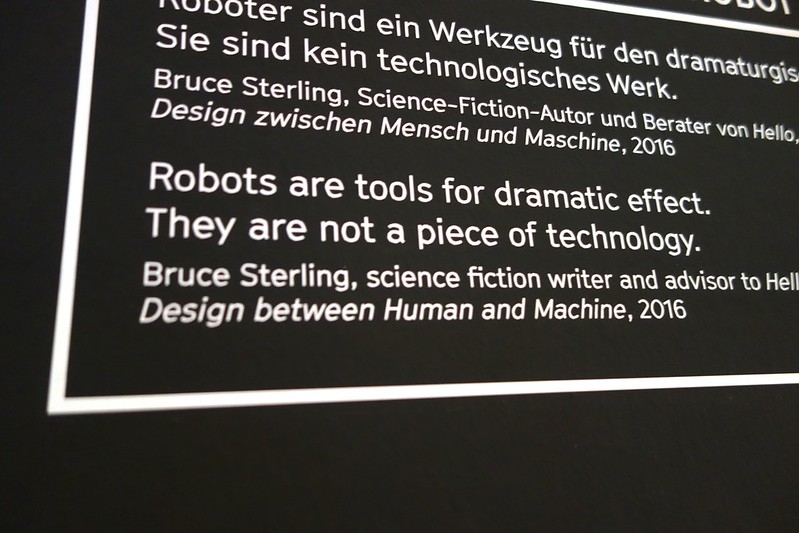
“Robots are tools for dramatic effect.” Bruce Sterling quote at Vitra.
hellorobot provides a great snapshot of the artistic and commercial landscape around robots and AI. From artistic explorations like good old manifest, an industrial robot arm perpetually churning out algorithmically generated manifestos that’s been in ZKM since ca. 2008 or Dan Chen’s much more recent CremateBot which allows you to start cremating the skin and hairs you shed as you go through your live, to the extremely commercial (think Industry 4.0 manufacturing bots), everything’s here. The exhibit isn’t huge, but it’s sweeping.

Dan Chen’s CremateBot at Vitra.
I was especially delighted to see many of our friends and ThingsCon alumni in the mix as well. Bruce Sterling was an adviser. Superflux’s Uninvited Guests were on display. Automato (Simone Rebaudengo‘s new outfit) had four or five pieces on display, including a long-time favorite, Teacher of Algorithms.
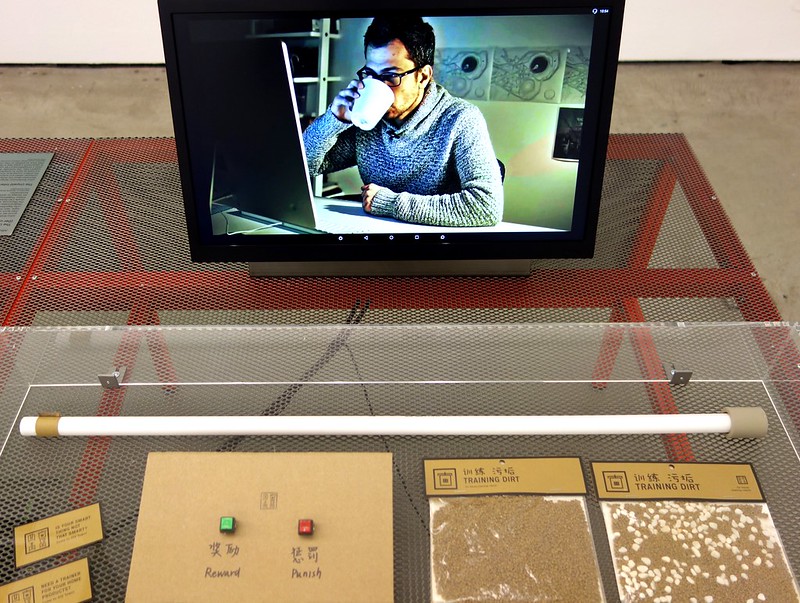
Automato’s Teacher of Algorithms at Vitra.
I found it especially encouraging to see wide range of medical and therapeutic robots included as well. An exoskeleton was present, as was a therapeutic doll for dementia patients. It was great to see this recent toy for autistic kids:
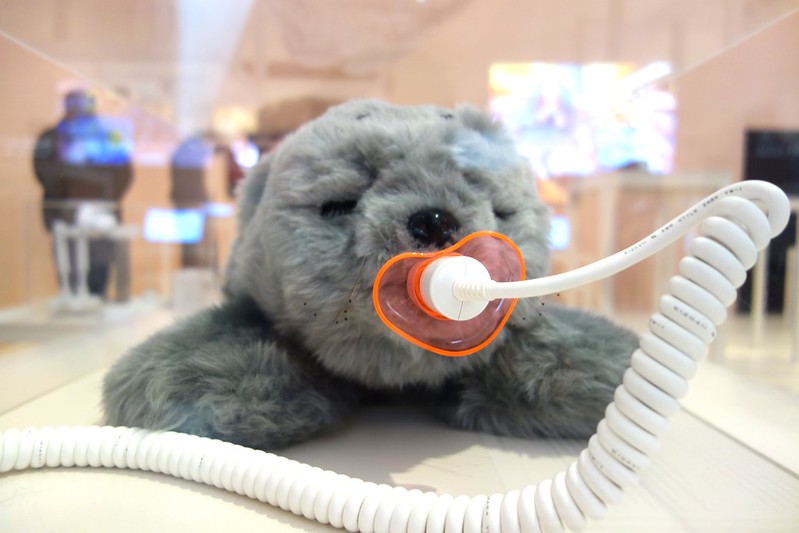
A doll for dementia therapy from 2001 at Vitra.

A toy for autistic kids at Vitra.
///
One section explored more day-to-day, in the future possibly banal scenarios. What might the relationship between robots and babies be, how could parenting change through these technologies? Will the visual language of industrial manufacturing sneak into the crib or will robots be as cutesy and cozy as other kids toys and paraphernalia?
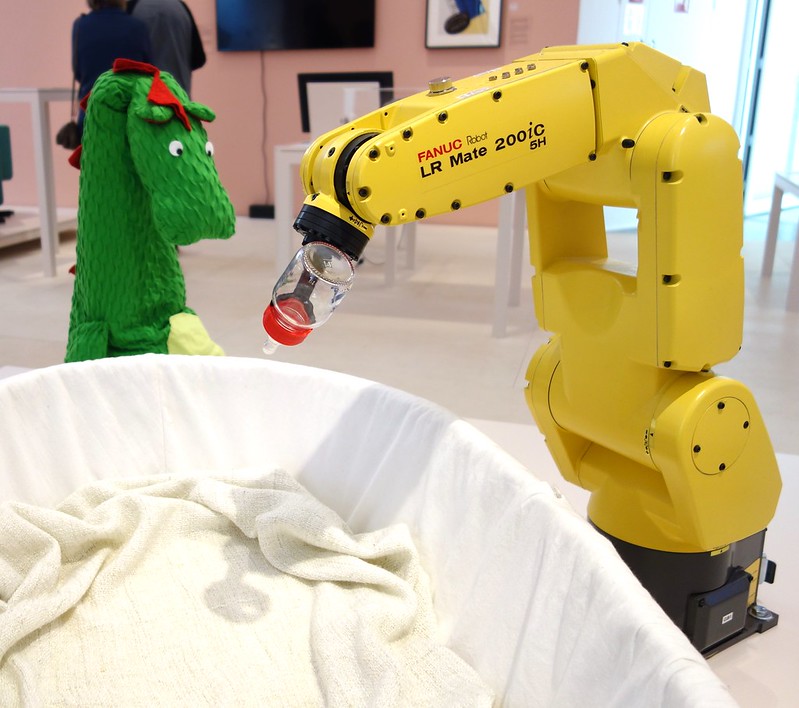
Will the visual language of industrial manufacturing enter the baby crib?
///
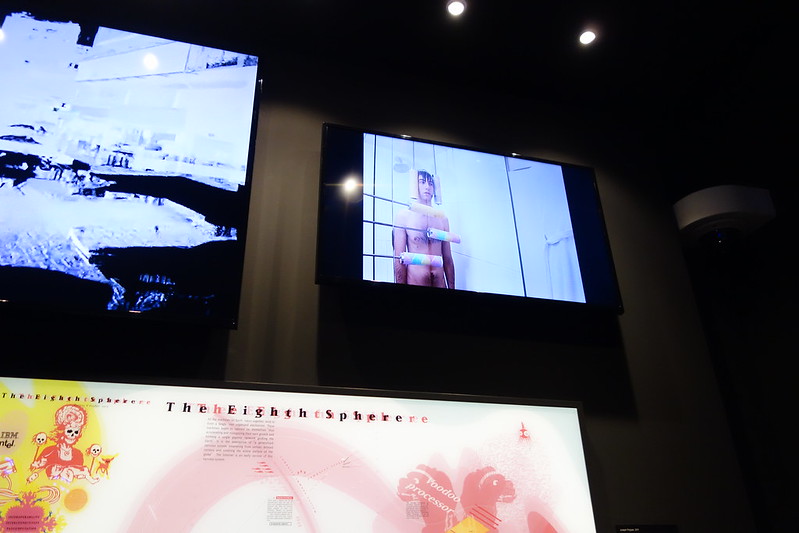
What happens when your smart home stops or fails? Lovely photo project at Vitra.
“Would you live in a robot?” The question was likely meant to provoke. Even though clearly some of the older and more traditional German and Swiss visitors around me seemed genuinely to be challenged to consider their world view by the exhibition, I’d go out on a limb: In 2017 I’m not sure the question is even a bit provocative, even though we might want to rethink how we consider our built environment. We might not all live in a robot/smart home. However, I kind of arrived at the exhibition in robots (I had flown in, then taken a cab) and I constantly carry a black box full of bots (my smart phone). Maybe we need updated questions already, like “How autonomous a robot would you live in?”, “What do you consider a robot?”, or “Would you consider yourself a cyborg if you had an implanted pacemaker/hand/memory bank?”
“What makes a good robot, one you’d like to live with?”
Or maybe this leads us off on a wild goose chase. Maybe we just need to ask “What makes a good robot, one you’d like to live with?” Robot, of course, is in this case used almost interchange with algorithm.
///
hellorobot is great, and highly recommended. However, the money quote for me, the key takeaway if you will, is one that I don’t think the curators even considered—nor should they have—in their effort to engage in a conversation around automation and living with robots.
It’s a quite from a not-so-recent Douglas Coupland project, of all things:
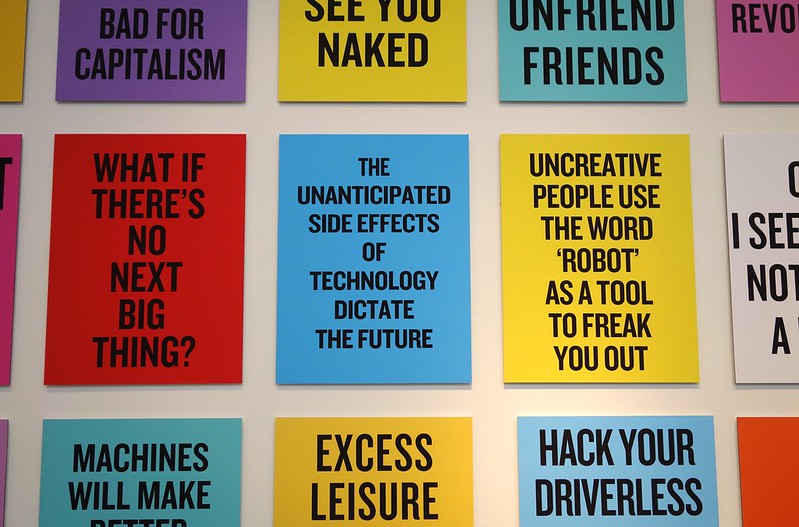
One of Douglas Coupland’s Micro Manifestos
“The unanticipated side effects of technology dictate the future” — Douglas Coupland
I think this quote pretty much holds the key to unlocking what the 21st century will be about. What are the unintended consequences of a technology once it’s deployed and starts interacting with other tech and systems and society at large? How can we design systems and technologies to allow for max potential upside and minimal potential downside?
This is also the challenge at the heart of ThingsCon’s mission statement, to foster the creation of a human-centric & responsible IoT.
Go see the exhibit if you’re in the vicinity. You won’t regret it.
ps. For more photos, see my Flickr album. Also, a heads-up based on personal experience: The exhibition opens at 10am, as does the café. There’s no warm place to hang out before nor a cup of coffee to be had, and the museum is in the middle of nowhere. Plan your arrival wisely.
